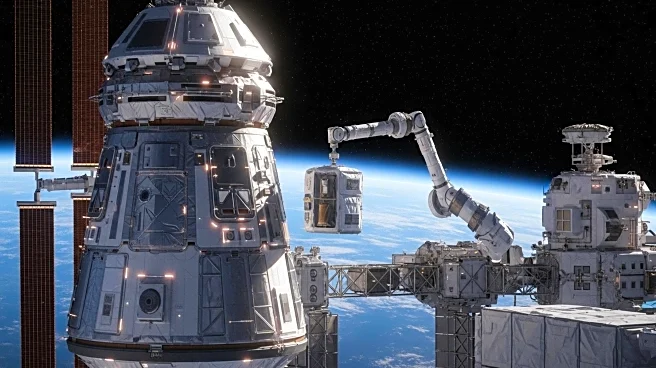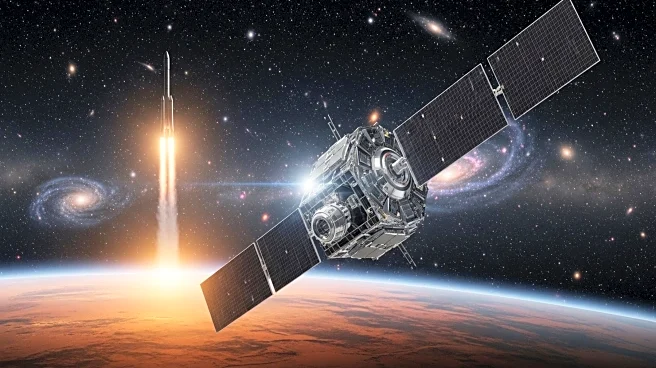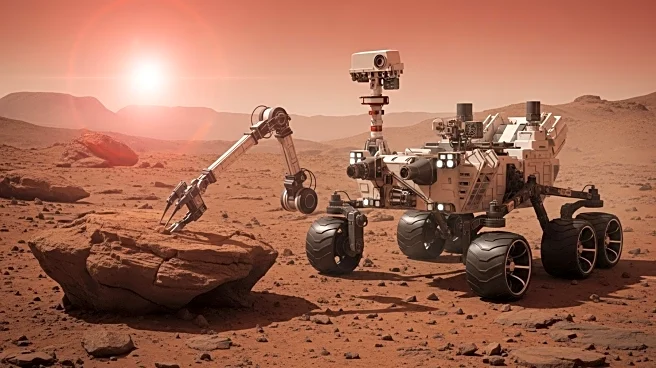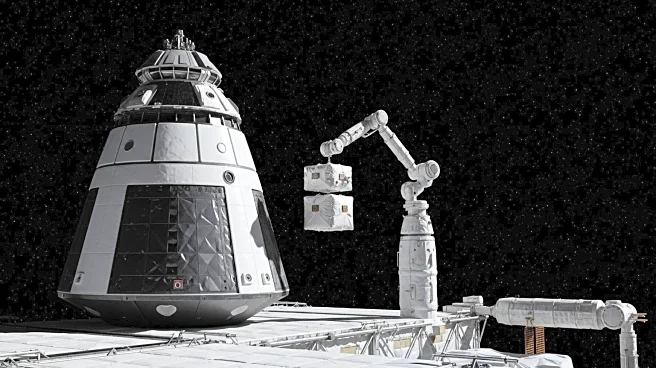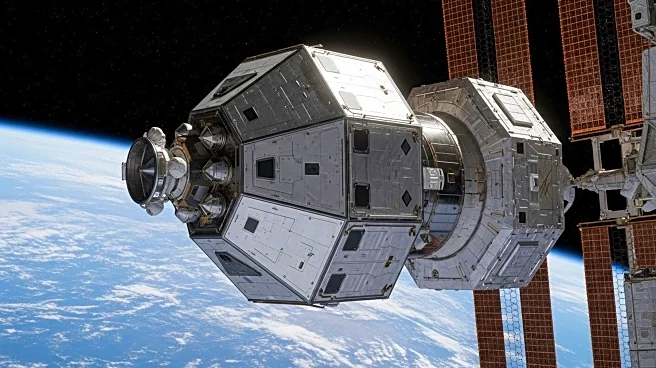What's Happening?
The European Space Agency (ESA), in collaboration with Airbus, has successfully installed a specialized metal 3D printer aboard the International Space Station (ISS) in May 2024. This initiative marks a significant milestone in space manufacturing, as it produced the first metal part ever printed in space. The installation was overseen by astronaut Andreas Mogensen during his Huginn mission. The printed metal object returned to Earth in early 2025, revealing unique properties that differ from Earth-printed equivalents. The absence of gravity in orbit affects the spread and settling of powdered metal during laser fusion, leading to new microstructures and mechanical responses. ESA engineers are studying these differences to understand the implications for future space missions.
Why It's Important?
The ability to 3D print metal parts in space could revolutionize space exploration by reducing the need to launch every component from Earth. This advancement could lead to significant cost savings and increased resilience for missions to the Moon, Mars, and beyond. In-orbit manufacturing allows astronauts to fabricate tools and parts on demand, conserving mass and volume at launch. According to NASA, this technology could improve reliability and efficiency in space missions. The unique properties of space-printed metals may offer advantages for specific applications, potentially leading to new designs and innovations in space technology.
What's Next?
ESA is focusing on refining the technology to ensure repeatability, safety, and quality control before approving flight-critical parts. Engineers are working on optimizing print settings, characterizing microstructures, and defining post-processing steps. The successful implementation of this technology could pave the way for on-demand manufacturing in space, supporting satellite repairs and the construction of future habitats. As research continues, the potential for broader applications in space missions and the development of new materials will be explored.
Beyond the Headlines
The development of space-based manufacturing raises questions about the future of space governance and international cooperation. As countries and private companies expand their space capabilities, the need for updated frameworks to address security and sustainability concerns becomes more pressing. The ability to produce materials in space could also impact terrestrial industries, leading to advancements in material science and engineering.

